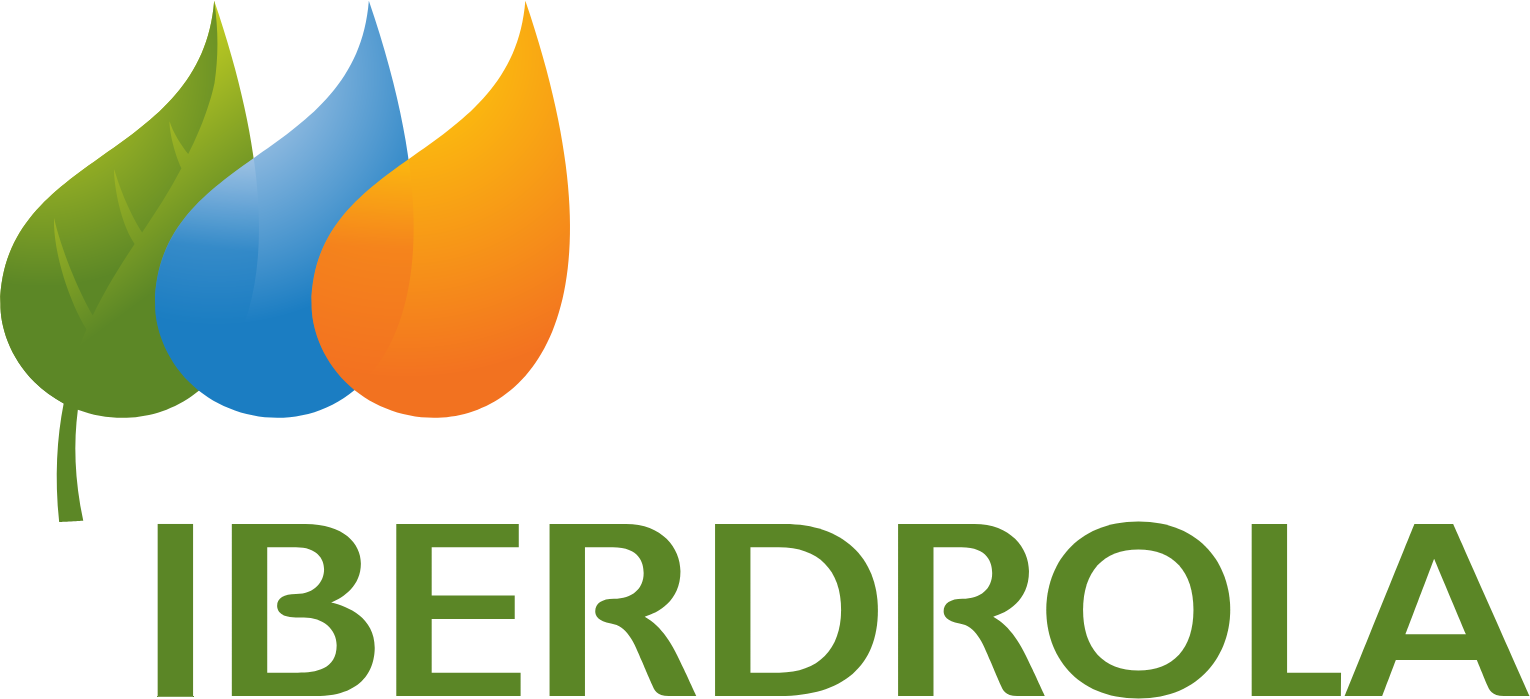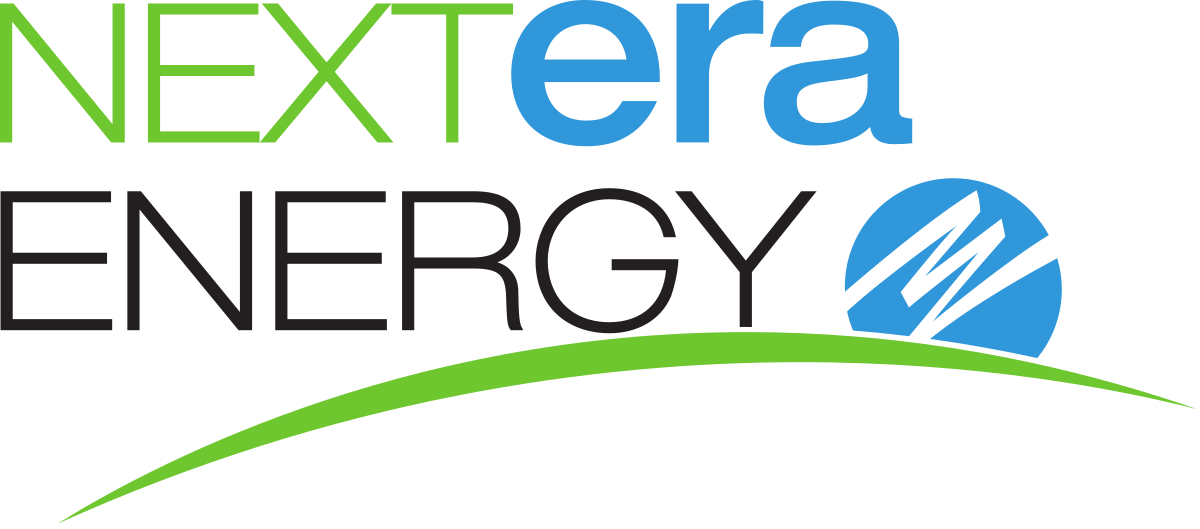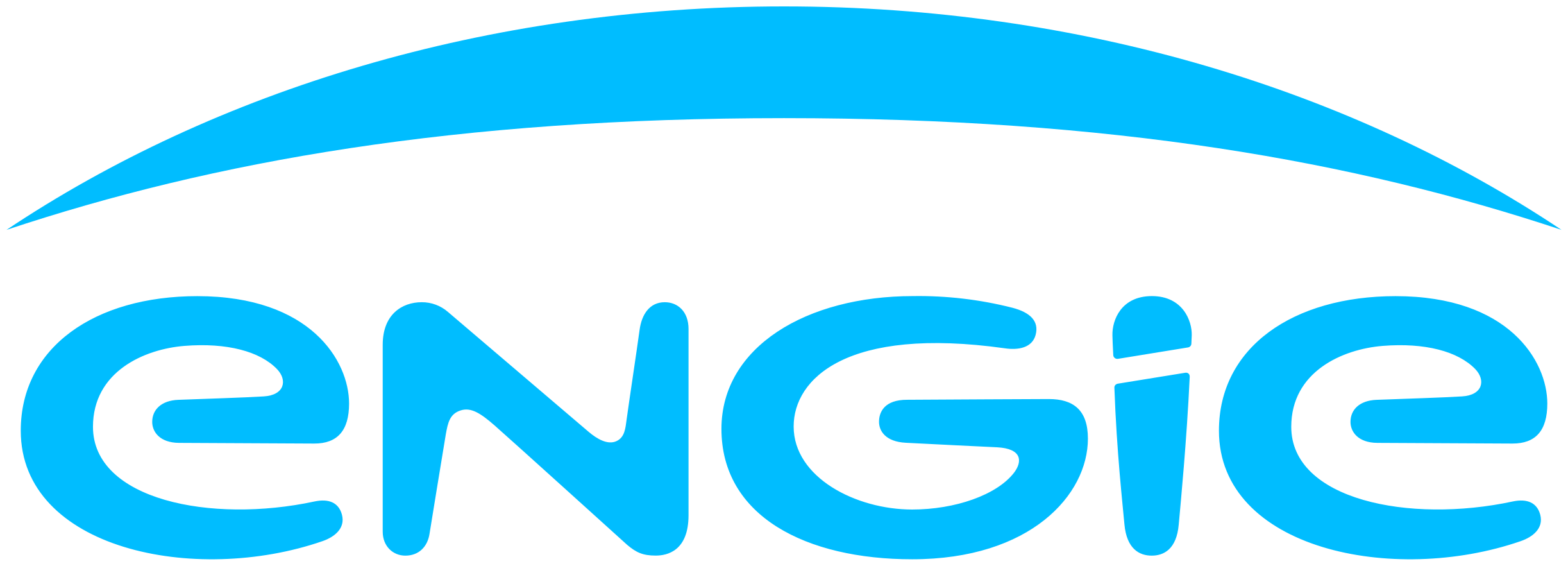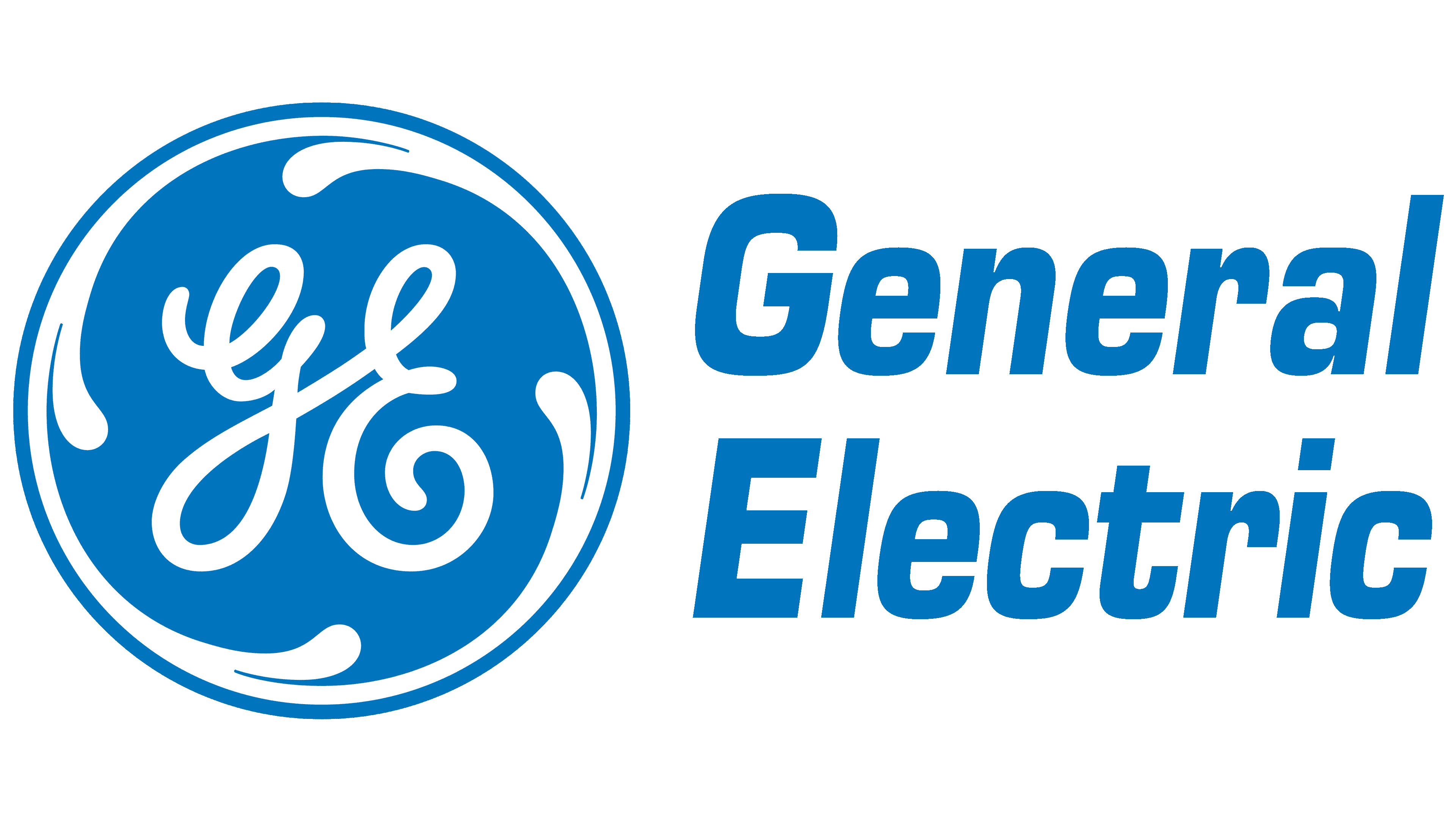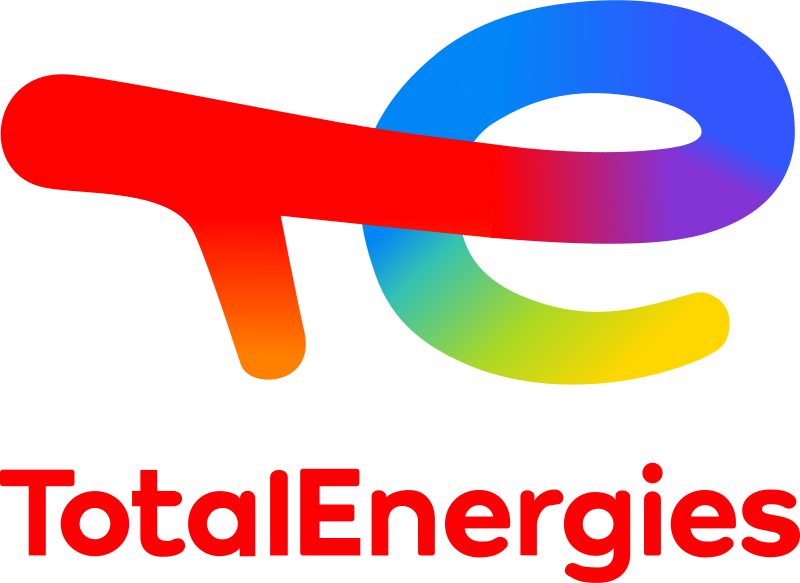Global Direct Air Carbon Capture Technology Market to Reach US$ 10.3 Bn by 2031; Growing at a CAGR of 14% over the Forecast Period (2023 – 2031)
Direct Air Carbon Capture (DAC) technology is an innovative approach to combating climate change by removing carbon dioxide (CO2) directly from the air. It involves using specialized systems to capture CO2 molecules from the atmosphere and then either storing them underground or converting them into useful products. This technology aims to reduce the concentration of CO2, a major greenhouse gas responsible for global warming, in the atmosphere.
How Direct Air Carbon Capture Works?
- Air Collection: Large fans draw in air from the surroundings, which contains a small amount of CO2 (about 0.04% of the air is CO2).
- CO2 Capture: The captured air is exposed to a material called a sorbent. This sorbent has the ability to chemically bind with CO2 molecules. As the air passes through the sorbent, the CO2 molecules stick to it, while the rest of the air continues through.
- CO2 Separation: After the sorbent captures CO2, it needs to be separated so that the CO2 can be collected. This separation is usually done using heat. When heated, the sorbent releases the CO2 molecules, which can then be collected.
- CO2 Utilization or Storage: The collected CO2 can be used for various purposes. It can be stored deep underground in geological formations, a process known as carbon sequestration. Alternatively, the captured CO2 can be used as a raw material for creating products like synthetic fuels, building materials, or even for enhancing greenhouse crop growth.
Global Direct Air Carbon Capture Technology Market Revenue Forecast, (US$ Million), 2018 – 2031

Growth Factors and Need for Global Global Direct Air Carbon Capture Technology Market:
- Addressing Past Emissions: Direct air carbon capture is important because it offers a way to remove CO2 that has already been released into the atmosphere from past activities. This is especially valuable because it can help mitigate the impacts of historical carbon emissions.
- Negative Emissions: By capturing more CO2 than is released, direct air carbon capture technology market can contribute to achieving negative emissions. This means that it helps offset the CO2 emissions from other sources, potentially even allowing us to reverse some of the environmental damage caused by excess CO2.
- Hard-to-Abate Sectors: Some industries, like aviation and heavy manufacturing, are difficult to decarbonize completely due to their reliance on fossil fuels. DAC can help these industries achieve carbon neutrality by capturing the CO2 they produce.
- Climate Goals: Many countries have set ambitious climate goals to limit global warming. Direct air carbon capture technology market plays a crucial role in achieving these goals by helping to reduce atmospheric CO2 levels.
The direct air carbon capture technology market has been evolving differently in Europe and North America due to varying policy landscapes, market dynamics, and investment priorities. Here are some key trends and differences between the two regions:
- European countries have been proactive in setting ambitious climate goals and regulations. The European Green Deal aims to achieve carbon neutrality by 2050, driving substantial interest in carbon capture technologies. Europe has implemented carbon pricing mechanisms, such as the Emissions Trading System (ETS), which create economic incentives for industries to invest in carbon reduction technologies like DAC. Countries across European have a strong tradition of research and innovation in sustainable technologies. Several European companies and research institutions are actively working on advancing direct air carbon capture technology market. European nations collaborate on research, development, and deployment of carbon capture technologies through organizations like the European Carbon Capture and Storage Association (ECCSA) and projects like the Northern Lights CCS project.

- Policy support for carbon capture technologies varies across North America. Some U.S. states and Canadian provinces have ambitious targets, while federal support in the U.S. has fluctuated depending on administration. The U.S. has seen significant private sector investments in clean energy technologies, including direct air carbon capture technology market. Private companies like Carbon Engineering and Global Thermostat have advanced DAC technology in North America. Additionally, North America’s entrepreneurial culture has led to the emergence of startups focused on DAC technology. These startups aim to drive innovation and bring DAC solutions to market.
Thus, both regions are actively investing in research, development, and deployment of direct air carbon capture technology market as a part of their broader strategies to address climate change and achieve carbon reduction goals.
Competitive Landscape
Key operating players in the global direct air carbon capture technology market are:
- Capture Carbon Infinity
- Carbon Engineering Ltd.
- Climeworks
- Global Thermostat
- Heirloom Carbon Technologies
- Infinitree LLC
- Mission Zero Technologies.
- Noya Inc.
- Skytree
- Soletair Power
- Sustaera Inc.
- Other Market Participants
Report Summary of Global Direct Air Carbon Capture Technology Market
| Report Specifications |
Details |
| Market Revenue in 2022 |
US$ 3.8 Billion |
| Market Size Forecast by 2031 |
US$ 10.3 Billion |
| Growth Rate (CAGR) |
14% |
| Historic Data |
2018 – 2021 |
| Base Year for Estimation |
2022 |
| Forecast Period |
2023 – 2031 |
| Report Inclusions |
Market Size & Estimates, Market Dynamics, Competitive Scenario, Trends, Growth Factors, Market Determinants, Key Investment Segmentation, Product/Service/Solutions Benchmarking |
| Segments Covered |
By System Type, By Deployment, By End Users |
| Regions Covered |
North America, Europe, Asia Pacific, Middle East & Africa, Latin America |
| Countries Covered |
U.S., Canada, Mexico, Rest of North America, France, The UK, Spain, Germany, Italy, Nordic Countries (Denmark, Finland, Iceland, Sweden, Norway), Benelux Union (Belgium, The Netherlands, Luxembourg), Rest of Europe, China, Japan, India, New Zealand, Australia, South Korea, Southeast Asia (Indonesia, Thailand, Malaysia, Singapore, Rest of Southeast Asia), Rest of Asia Pacific, Saudi Arabia, UAE, Egypt, Kuwait, South Africa, Rest of Middle East & Africa, Brazil, Argentina, Rest of Latin America |
| Key Players |
Capture Carbon Infinity, Carbon Engineering Ltd., Climeworks, Global Thermostat, Heirloom Carbon Technologies, Infinitree LLC, Mission Zero Technologies., Noya Inc., Skytree, Soletair Power, Sustaera Inc., Other Industry Participants |
| Customization Scope |
Customization allows for the inclusion/modification of content pertaining to geographical regions, countries, and specific market segments. |
| Pricing & Procurement Options |
Explore purchase options tailored to your specific research requirements |
| Contact Details |
Consult With Our Expert
Japan (Toll-Free): – +81 663-386-8111
South Korea (Toll-Free): – +82-808- 703-126
Saudi Arabia (Toll-Free): – +966 800 850 1643
United States: +1 302-232-5106
United Kingdom: +447537105080
E-mail: askanexpert@thenicheresearh.com
|
Global Direct Air Carbon Capture Technology Market
By System Type
By Deployment
By End Users
- Renewable energy developers
- CO2 storage companies
- CO2 utilization companies
By Regmyrion
- North America (U.S., Canada, Mexico, Rest of North America)
- Europe (France, The UK, Spain, Germany, Italy, Nordic Countries (Denmark, Finland, Iceland, Sweden, Norway), Benelux Union (Belgium, The Netherlands, Luxembourg), Rest of Europe)
- Asia Pacific (China, Japan, India, New Zealand, Australia, South Korea, Southeast Asia (Indonesia, Thailand, Malaysia, Singapore, Rest of Southeast Asia), Rest of Asia Pacific)
- Middle East & Africa (Saudi Arabia, UAE, Egypt, Kuwait, South Africa, Rest of Middle East & Africa)
- Latin America (Brazil, Argentina, Rest of Latin America)
Report Coverage and Deliverables
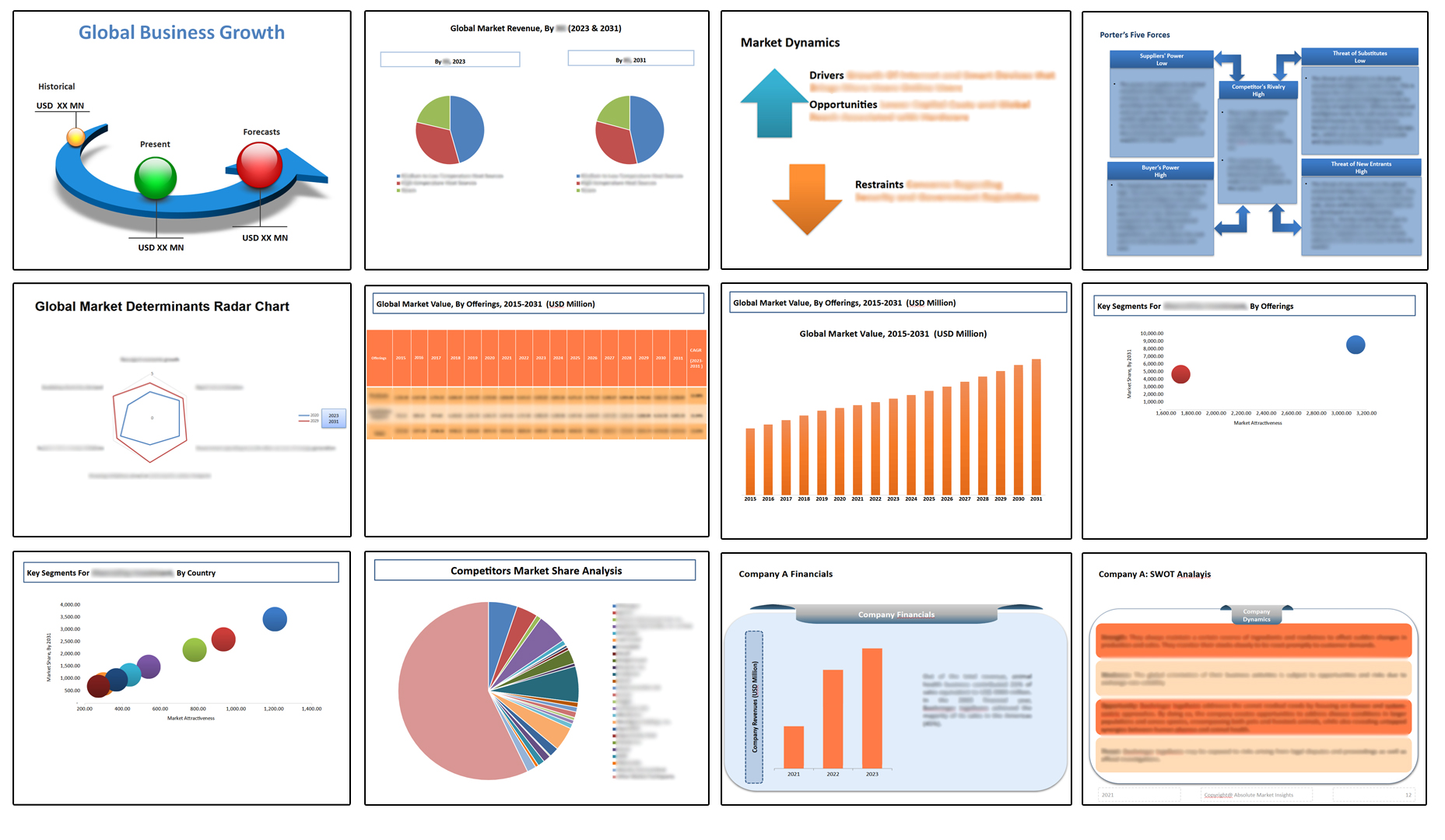
Table of Contents
By System Type
By Deployment
By End Users
• Renewable energy developers
• CO2 utilization companies
By Region
.
.
.
.
1.Market Scope
1.2.Years Considered
1.2.1.Historic Years: 2018 – 2021
1.2.3.Forecast Years: 2023 – 2031
3.Research Methodology
3.1.Primary Research
3.1.1.Research Questionnaire
3.1.2.Global Percentage Breakdown
3.1.3.Primary Interviews: Key Opinion Leaders (KOLs)
3.3.Market Size Estimates
3.4.Data Triangulation Methodology
4.Recommendations and Insights from TNR’s Perspective**
5.Holistic Overview of Direct Air Carbon Capture Technology Market
6.Market Synopsis: Direct Air Carbon Capture Technology Market
7.Direct Air Carbon Capture Technology Market Analysis: Qualitative Perspective
7.1.Introduction
7.1.2.Industry Development
7.3.Trends in Direct Air Carbon Capture Technology Market
7.4.Market Determinants Radar Chart
7.5.Macro-Economic and Micro-Economic Indicators: Direct Air Carbon Capture Technology Market
7.6.Porter’s Five Force Analysis
7.7.Analysis on Policies and Investments that are Supporting DAC Implementation
8.Global Direct Air Carbon Capture Technology Market Analysis and Forecasts, 2023 – 2031
8.1.Overview
8.1.1.Global Direct Air Carbon Capture Technology Market Revenue (US$ Mn)
8.2.Global Direct Air Carbon Capture Technology Market Revenue (US$ Mn) and Forecasts, By System Type
8.2.1.Solid
8.2.1.2.Market Estimation and Penetration, 2018 – 2022
8.2.1.3.Market Forecast, 2023 – 2031
8.2.1.4.Compound Annual Growth Rate (CAGR)
8.2.1.5.Regional Bifurcation
8.2.1.5.1.North America
8.2.1.5.1.1.Market Estimation, 2018 – 2022
8.2.1.5.1.2.Market Forecast, 2023 – 2031
8.2.1.5.2.Europe
8.2.1.5.2.1.Market Estimation, 2018 – 2022
8.2.1.5.2.2.Market Forecast, 2023 – 2031
8.2.1.5.3.Asia Pacific
8.2.1.5.3.1.Market Estimation, 2018 – 2022
8.2.1.5.3.2.Market Forecast, 2023 – 2031
8.2.1.5.4.Middle East and Africa
8.2.1.5.4.1.Market Estimation, 2018 – 2022
8.2.1.5.4.2.Market Forecast, 2023 – 2031
8.2.1.5.5.Latin America
8.2.1.5.5.1.Market Estimation, 2018 – 2022
8.2.1.5.5.2.Market Forecast, 2023 – 2031
8.2.2.Liquid
8.2.2.2.Market Estimation and Penetration, 2018 – 2022
8.2.2.3.Market Forecast, 2023 – 2031
8.2.2.4.Compound Annual Growth Rate (CAGR)
8.2.2.5.Regional Bifurcation
8.2.2.5.1.North America
8.2.2.5.1.1.Market Estimation, 2018 – 2022
8.2.2.5.1.2.Market Forecast, 2023 – 2031
8.2.2.5.2.Europe
8.2.2.5.2.1.Market Estimation, 2018 – 2022
8.2.2.5.2.2.Market Forecast, 2023 – 2031
8.2.2.5.3.Asia Pacific
8.2.2.5.3.1.Market Estimation, 2018 – 2022
8.2.2.5.3.2.Market Forecast, 2023 – 2031
8.2.2.5.4.Middle East and Africa
8.2.2.5.4.1.Market Estimation, 2018 – 2022
8.2.2.5.4.2.Market Forecast, 2023 – 2031
8.2.2.5.5.Latin America
8.2.2.5.5.1.Market Estimation, 2018 – 2022
8.2.2.5.5.2.Market Forecast, 2023 – 2031
8.3.Key Segment for Channeling Investments
9.Global Direct Air Carbon Capture Technology Market Analysis and Forecasts, 2023 – 2031
9.2.Global Direct Air Carbon Capture Technology Market Revenue (US$ Mn) and Forecasts, By Deployment
9.2.1.Indoor
9.2.1.2.Market Estimation and Penetration, 2018 – 2022
9.2.1.3.Market Forecast, 2023 – 2031
9.2.1.4.Compound Annual Growth Rate (CAGR)
9.2.1.5.Regional Bifurcation
9.2.1.5.1.North America
9.2.1.5.1.1.Market Estimation, 2018 – 2022
9.2.1.5.1.2.Market Forecast, 2023 – 2031
9.2.1.5.2.Europe
9.2.1.5.2.1.Market Estimation, 2018 – 2022
9.2.1.5.2.2.Market Forecast, 2023 – 2031
9.2.1.5.3.Asia Pacific
9.2.1.5.3.1.Market Estimation, 2018 – 2022
9.2.1.5.3.2.Market Forecast, 2023 – 2031
9.2.1.5.4.Middle East and Africa
9.2.1.5.4.1.Market Estimation, 2018 – 2022
9.2.1.5.4.2.Market Forecast, 2023 – 2031
9.2.1.5.5.Latin America
9.2.1.5.5.1.Market Estimation, 2018 – 2022
9.2.1.5.5.2.Market Forecast, 2023 – 2031
9.2.2.Outdoor
9.2.2.2.Market Estimation and Penetration, 2018 – 2022
9.2.2.3.Market Forecast, 2023 – 2031
9.2.2.4.Compound Annual Growth Rate (CAGR)
9.2.2.5.Regional Bifurcation
9.2.2.5.1.North America
9.2.2.5.1.1.Market Estimation, 2018 – 2022
9.2.2.5.1.2.Market Forecast, 2023 – 2031
9.2.2.5.2.Europe
9.2.2.5.2.1.Market Estimation, 2018 – 2022
9.2.2.5.2.2.Market Forecast, 2023 – 2031
9.2.2.5.3.Asia Pacific
9.2.2.5.3.1.Market Estimation, 2018 – 2022
9.2.2.5.3.2.Market Forecast, 2023 – 2031
9.2.2.5.4.Middle East and Africa
9.2.2.5.4.1.Market Estimation, 2018 – 2022
9.2.2.5.4.2.Market Forecast, 2023 – 2031
9.2.2.5.5.Latin America
9.2.2.5.5.1.Market Estimation, 2018 – 2022
9.2.2.5.5.2.Market Forecast, 2023 – 2031
9.3.Key Segment for Channeling Investments
10.Global Direct Air Carbon Capture Technology Market Analysis and Forecasts, 2023 – 2031
10.2.Global Direct Air Carbon Capture Technology Market Revenue (US$ Mn) and Forecasts, By End Users
10.2.1.Renewable energy developers
10.2.1.2.Market Estimation and Penetration, 2018 – 2022
10.2.1.3.Market Forecast, 2023 – 2031
10.2.1.4.Compound Annual Growth Rate (CAGR)
10.2.1.5.Regional Bifurcation
10.2.1.5.1.North America
10.2.1.5.1.1.Market Estimation, 2018 – 2022
10.2.1.5.1.2.Market Forecast, 2023 – 2031
10.2.1.5.2.Europe
10.2.1.5.2.1.Market Estimation, 2018 – 2022
10.2.1.5.2.2.Market Forecast, 2023 – 2031
10.2.1.5.3.Asia Pacific
10.2.1.5.3.1.Market Estimation, 2018 – 2022
10.2.1.5.3.2.Market Forecast, 2023 – 2031
10.2.1.5.4.Middle East and Africa
10.2.1.5.4.1.Market Estimation, 2018 – 2022
10.2.1.5.4.2.Market Forecast, 2023 – 2031
10.2.1.5.5.Latin America
10.2.1.5.5.1.Market Estimation, 2018 – 2022
10.2.1.5.5.2.Market Forecast, 2023 – 2031
10.2.2.CO2 storage companies
10.2.2.2.Market Estimation and Penetration, 2018 – 2022
10.2.2.3.Market Forecast, 2023 – 2031
10.2.2.4.Compound Annual Growth Rate (CAGR)
10.2.2.5.Regional Bifurcation
10.2.2.5.1.North America
10.2.2.5.1.1.Market Estimation, 2018 – 2022
10.2.2.5.1.2.Market Forecast, 2023 – 2031
10.2.2.5.2.Europe
10.2.2.5.2.1.Market Estimation, 2018 – 2022
10.2.2.5.2.2.Market Forecast, 2023 – 2031
10.2.2.5.3.Asia Pacific
10.2.2.5.3.1.Market Estimation, 2018 – 2022
10.2.2.5.3.2.Market Forecast, 2023 – 2031
10.2.2.5.4.Middle East and Africa
10.2.2.5.4.1.Market Estimation, 2018 – 2022
10.2.2.5.4.2.Market Forecast, 2023 – 2031
10.2.2.5.5.Latin America
10.2.2.5.5.1.Market Estimation, 2018 – 2022
10.2.2.5.5.2.Market Forecast, 2023 – 2031
10.2.3.CO2 utilization companies
10.2.3.2.Market Estimation and Penetration, 2018 – 2022
10.2.3.3.Market Forecast, 2023 – 2031
10.2.3.4.Compound Annual Growth Rate (CAGR)
10.2.3.5.Regional Bifurcation
10.2.3.5.1.North America
10.2.3.5.1.1.Market Estimation, 2018 – 2022
10.2.3.5.1.2.Market Forecast, 2023 – 2031
10.2.3.5.2.Europe
10.2.3.5.2.1.Market Estimation, 2018 – 2022
10.2.3.5.2.2.Market Forecast, 2023 – 2031
10.2.3.5.3.Asia Pacific
10.2.3.5.3.1.Market Estimation, 2018 – 2022
10.2.3.5.3.2.Market Forecast, 2023 – 2031
10.2.3.5.4.Middle East and Africa
10.2.3.5.4.1.Market Estimation, 2018 – 2022
10.2.3.5.4.2.Market Forecast, 2023 – 2031
10.2.3.5.5.Latin America
10.2.3.5.5.1.Market Estimation, 2018 – 2022
10.2.3.5.5.2.Market Forecast, 2023 – 2031
10.3.Key Segment for Channeling Investments
11.North America Direct Air Carbon Capture Technology Market Analysis and Forecasts, 2023 – 2031
11.1.Overview
11.1.1.North America Direct Air Carbon Capture Technology Market Revenue (US$ Mn)
11.2.North America Direct Air Carbon Capture Technology Market Revenue (US$ Mn) and Forecasts, By System Type
11.3.North America Direct Air Carbon Capture Technology Market Revenue (US$ Mn) and Forecasts, By Deployment
11.4.North America Direct Air Carbon Capture Technology Market Revenue (US$ Mn) and Forecasts, By End Users
11.4.1.Renewable energy developers
11.4.2.CO2 storage companies
11.4.3.CO2 utilization companies
11.5.North America Direct Air Carbon Capture Technology Market Revenue (US$ Mn) and Forecasts, By Country
11.5.1.U.S
11.5.1.1.U.S Direct Air Carbon Capture Technology Market Revenue (US$ Mn) and Forecasts, By System Type
11.5.1.2.U.S Direct Air Carbon Capture Technology Market Revenue (US$ Mn) and Forecasts, By Deployment
11.5.1.3.U.S Direct Air Carbon Capture Technology Market Revenue (US$ Mn) and Forecasts, By End Users
11.5.1.3.1.Renewable energy developers
11.5.1.3.2.CO2 storage companies
11.5.1.3.3.CO2 utilization companies
11.5.2.Canada
11.5.2.1.Canada Direct Air Carbon Capture Technology Market Revenue (US$ Mn) and Forecasts, By System Type
11.5.2.2.Canada Direct Air Carbon Capture Technology Market Revenue (US$ Mn) and Forecasts, By Deployment
11.5.2.3.Canada Direct Air Carbon Capture Technology Market Revenue (US$ Mn) and Forecasts, By End Users
11.5.2.3.1.Renewable energy developers
11.5.2.3.2.CO2 storage companies
11.5.2.3.3.CO2 utilization companies
11.5.3.Mexico
11.5.3.1.Mexico Direct Air Carbon Capture Technology Market Revenue (US$ Mn) and Forecasts, By System Type
11.5.3.2.Mexico Direct Air Carbon Capture Technology Market Revenue (US$ Mn) and Forecasts, By Deployment
11.5.3.3.Mexico Direct Air Carbon Capture Technology Market Revenue (US$ Mn) and Forecasts, By End Users
11.5.3.3.1.Renewable energy developers
11.5.3.3.2.CO2 storage companies
11.5.3.3.3.CO2 utilization companies
11.5.4.Rest of North America
11.5.4.1.Rest of North America Direct Air Carbon Capture Technology Market Revenue (US$ Mn) and Forecasts, By System Type
11.5.4.2.Rest of North America Direct Air Carbon Capture Technology Market Revenue (US$ Mn) and Forecasts, By Deployment
11.5.4.3.Rest of North America Direct Air Carbon Capture Technology Market Revenue (US$ Mn) and Forecasts, By End Users
11.5.4.3.1.Renewable energy developers
11.5.4.3.2.CO2 storage companies
11.5.4.3.3.CO2 utilization companies
11.6.Key Segment for Channeling Investments
12.Europe Direct Air Carbon Capture Technology Market Analysis and Forecasts, 2023 – 2031
12.1.Overview
12.1.1.Europe Direct Air Carbon Capture Technology Market Revenue (US$ Mn)
12.2.Europe Direct Air Carbon Capture Technology Market Revenue (US$ Mn) and Forecasts, By System Type
12.3.Europe Direct Air Carbon Capture Technology Market Revenue (US$ Mn) and Forecasts, By Deployment
12.4.Europe Direct Air Carbon Capture Technology Market Revenue (US$ Mn) and Forecasts, By End Users
12.4.1.Renewable energy developers
12.4.2.CO2 storage companies
12.4.3.CO2 utilization companies
12.5.Europe Direct Air Carbon Capture Technology Market Revenue (US$ Mn) and Forecasts, By Country
12.5.1.France
12.5.1.1.France Direct Air Carbon Capture Technology Market Revenue (US$ Mn) and Forecasts, By System Type
12.5.1.2.France Direct Air Carbon Capture Technology Market Revenue (US$ Mn) and Forecasts, By Deployment
12.5.1.3.France Direct Air Carbon Capture Technology Market Revenue (US$ Mn) and Forecasts, By End Users
12.5.1.3.1.Renewable energy developers
12.5.1.3.2.CO2 storage companies
12.5.1.3.3.CO2 utilization companies
12.5.2.The UK
12.5.2.1.The UK Direct Air Carbon Capture Technology Market Revenue (US$ Mn) and Forecasts, By System Type
12.5.2.2.The UK Direct Air Carbon Capture Technology Market Revenue (US$ Mn) and Forecasts, By Deployment
12.5.2.3.The UK Direct Air Carbon Capture Technology Market Revenue (US$ Mn) and Forecasts, By End Users
12.5.2.3.1.Renewable energy developers
12.5.2.3.2.CO2 storage companies
12.5.2.3.3.CO2 utilization companies
12.5.3.Spain
12.5.3.1.Spain Direct Air Carbon Capture Technology Market Revenue (US$ Mn) and Forecasts, By System Type
12.5.3.2.Spain Direct Air Carbon Capture Technology Market Revenue (US$ Mn) and Forecasts, By Deployment
12.5.3.3.Spain Direct Air Carbon Capture Technology Market Revenue (US$ Mn) and Forecasts, By End Users
12.5.3.3.1.Renewable energy developers
12.5.3.3.2.CO2 storage companies
12.5.3.3.3.CO2 utilization companies
12.5.4.Germany
12.5.4.1.Germany Direct Air Carbon Capture Technology Market Revenue (US$ Mn) and Forecasts, By System Type
12.5.4.2.Germany Direct Air Carbon Capture Technology Market Revenue (US$ Mn) and Forecasts, By Deployment
12.5.4.3.Germany Direct Air Carbon Capture Technology Market Revenue (US$ Mn) and Forecasts, By End Users
12.5.4.3.1.Renewable energy developers
12.5.4.3.2.CO2 storage companies
12.5.4.3.3.CO2 utilization companies
12.5.5.Italy
12.5.5.1.Italy Direct Air Carbon Capture Technology Market Revenue (US$ Mn) and Forecasts, By System Type
12.5.5.2.Italy Direct Air Carbon Capture Technology Market Revenue (US$ Mn) and Forecasts, By Deployment
12.5.5.3.Italy Direct Air Carbon Capture Technology Market Revenue (US$ Mn) and Forecasts, By End Users
12.5.5.3.1.Renewable energy developers
12.5.5.3.2.CO2 storage companies
12.5.5.3.3.CO2 utilization companies
12.5.6.Nordic Countries
12.5.6.1.Nordic Countries Direct Air Carbon Capture Technology Market Revenue (US$ Mn) and Forecasts, By System Type
12.5.6.2.Nordic Countries Direct Air Carbon Capture Technology Market Revenue (US$ Mn) and Forecasts, By Deployment
12.5.6.3.Nordic Countries Direct Air Carbon Capture Technology Market Revenue (US$ Mn) and Forecasts, By End Users
12.5.6.3.1.Renewable energy developers
12.5.6.3.2.CO2 storage companies
12.5.6.3.3.CO2 utilization companies
12.5.6.4.Nordic Countries Direct Air Carbon Capture Technology Market Revenue (US$ Mn) and Forecasts, By Country
12.5.7.Benelux Union
12.5.7.1.Benelux Union Direct Air Carbon Capture Technology Market Revenue (US$ Mn) and Forecasts, By System Type
12.5.7.2.Benelux Union Direct Air Carbon Capture Technology Market Revenue (US$ Mn) and Forecasts, By Deployment
12.5.7.3.Benelux Union Direct Air Carbon Capture Technology Market Revenue (US$ Mn) and Forecasts, By End Users
12.5.7.3.1.Renewable energy developers
12.5.7.3.2.CO2 storage companies
12.5.7.3.3.CO2 utilization companies
12.5.7.4.Benelux Union Direct Air Carbon Capture Technology Market Revenue (US$ Mn) and Forecasts, By Country
12.5.7.4.2.The Netherlands
12.5.8.Rest of Europe
12.5.8.1.Rest of Europe Direct Air Carbon Capture Technology Market Revenue (US$ Mn) and Forecasts, By System Type
12.5.8.2.Rest of Europe Direct Air Carbon Capture Technology Market Revenue (US$ Mn) and Forecasts, By Deployment
12.5.8.3.Rest of Europe Direct Air Carbon Capture Technology Market Revenue (US$ Mn) and Forecasts, By End Users
12.5.8.3.1.Renewable energy developers
12.5.8.3.2.CO2 storage companies
12.5.8.3.3.CO2 utilization companies
12.6.Key Segment for Channeling Investments
13.Asia Pacific Direct Air Carbon Capture Technology Market Analysis and Forecasts, 2023 – 2031
13.1.Overview
13.1.1.Asia Pacific Direct Air Carbon Capture Technology Market Revenue (US$ Mn)
13.2.Asia Pacific Direct Air Carbon Capture Technology Market Revenue (US$ Mn) and Forecasts, By System Type
13.3.Asia Pacific Direct Air Carbon Capture Technology Market Revenue (US$ Mn) and Forecasts, By Deployment
13.4.Asia Pacific Direct Air Carbon Capture Technology Market Revenue (US$ Mn) and Forecasts, By End Users
13.4.1.Renewable energy developers
13.4.2.CO2 storage companies
13.4.3.CO2 utilization companies
13.5.Asia Pacific Direct Air Carbon Capture Technology Market Revenue (US$ Mn) and Forecasts, By Country
13.5.1.China
13.5.1.1.China Direct Air Carbon Capture Technology Market Revenue (US$ Mn) and Forecasts, By System Type
13.5.1.2.China Direct Air Carbon Capture Technology Market Revenue (US$ Mn) and Forecasts, By Deployment
13.5.1.3.China Direct Air Carbon Capture Technology Market Revenue (US$ Mn) and Forecasts, By End Users
13.5.1.3.1.Renewable energy developers
13.5.1.3.2.CO2 storage companies
13.5.1.3.3.CO2 utilization companies
13.5.2.Japan
13.5.2.1.Japan Direct Air Carbon Capture Technology Market Revenue (US$ Mn) and Forecasts, By System Type
13.5.2.2.Japan Direct Air Carbon Capture Technology Market Revenue (US$ Mn) and Forecasts, By Deployment
13.5.2.3.Japan Direct Air Carbon Capture Technology Market Revenue (US$ Mn) and Forecasts, By End Users
13.5.2.3.1.Renewable energy developers
13.5.2.3.2.CO2 storage companies
13.5.2.3.3.CO2 utilization companies
13.5.3.India
13.5.3.1.India Direct Air Carbon Capture Technology Market Revenue (US$ Mn) and Forecasts, By System Type
13.5.3.2.India Direct Air Carbon Capture Technology Market Revenue (US$ Mn) and Forecasts, By Deployment
13.5.3.3.India Direct Air Carbon Capture Technology Market Revenue (US$ Mn) and Forecasts, By End Users
13.5.3.3.1.Renewable energy developers
13.5.3.3.2.CO2 storage companies
13.5.3.3.3.CO2 utilization companies
13.5.4.New Zealand
13.5.4.1.New Zealand Direct Air Carbon Capture Technology Market Revenue (US$ Mn) and Forecasts, By System Type
13.5.4.2.New Zealand Direct Air Carbon Capture Technology Market Revenue (US$ Mn) and Forecasts, By Deployment
13.5.4.3.New Zealand Direct Air Carbon Capture Technology Market Revenue (US$ Mn) and Forecasts, By End Users
13.5.4.3.1.Renewable energy developers
13.5.4.3.2.CO2 storage companies
13.5.4.3.3.CO2 utilization companies
13.5.5.Australia
13.5.5.1.Australia Direct Air Carbon Capture Technology Market Revenue (US$ Mn) and Forecasts, By System Type
13.5.5.2.Australia Direct Air Carbon Capture Technology Market Revenue (US$ Mn) and Forecasts, By Deployment
13.5.5.3.Australia Direct Air Carbon Capture Technology Market Revenue (US$ Mn) and Forecasts, By End Users
13.5.5.3.1.Renewable energy developers
13.5.5.3.2.CO2 storage companies
13.5.5.3.3.CO2 utilization companies
13.5.6.South Korea
13.5.6.1.South Korea Direct Air Carbon Capture Technology Market Revenue (US$ Mn) and Forecasts, By System Type
13.5.6.2.South Korea Direct Air Carbon Capture Technology Market Revenue (US$ Mn) and Forecasts, By Deployment
13.5.6.3.South Korea Direct Air Carbon Capture Technology Market Revenue (US$ Mn) and Forecasts, By End Users
13.5.6.3.1.Renewable energy developers
13.5.6.3.2.CO2 storage companies
13.5.6.3.3.CO2 utilization companies
13.5.7.Southeast Asia
13.5.7.1.Southeast Asia Direct Air Carbon Capture Technology Market Revenue (US$ Mn) and Forecasts, By System Type
13.5.7.2.Southeast Asia Direct Air Carbon Capture Technology Market Revenue (US$ Mn) and Forecasts, By Deployment
13.5.7.3.Southeast Asia Direct Air Carbon Capture Technology Market Revenue (US$ Mn) and Forecasts, By End Users
13.5.7.3.1.Renewable energy developers
13.5.7.3.2.CO2 storage companies
13.5.7.3.3.CO2 utilization companies
13.5.7.4.Southeast Asia Direct Air Carbon Capture Technology Market Revenue (US$ Mn) and Forecasts, By Country
13.5.7.4.5.Rest of Southeast Asia
13.5.8.Rest of Asia Pacific
13.5.8.1.Rest of Asia Pacific Direct Air Carbon Capture Technology Market Revenue (US$ Mn) and Forecasts, By System Type
13.5.8.2.Rest of Asia Pacific Direct Air Carbon Capture Technology Market Revenue (US$ Mn) and Forecasts, By Deployment
13.5.8.3.Rest of Asia Pacific Direct Air Carbon Capture Technology Market Revenue (US$ Mn) and Forecasts, By End Users
13.5.8.3.1.Renewable energy developers
13.5.8.3.2.CO2 storage companies
13.5.8.3.3.CO2 utilization companies
13.6.Key Segment for Channeling Investments
14.Middle East and Africa Direct Air Carbon Capture Technology Market Analysis and Forecasts, 2023 – 2031
14.1.Overview
14.1.1.Middle East and Africa Direct Air Carbon Capture Technology Market Revenue (US$ Mn)
14.2.Middle East and Africa Direct Air Carbon Capture Technology Market Revenue (US$ Mn) and Forecasts, By System Type
14.3.Middle East and Africa Direct Air Carbon Capture Technology Market Revenue (US$ Mn) and Forecasts, By Deployment
14.4.Middle East and Africa Direct Air Carbon Capture Technology Market Revenue (US$ Mn) and Forecasts, By End Users
14.4.1.Renewable energy developers
14.4.2.CO2 storage companies
14.4.3.CO2 utilization companies
14.5.Middle East and Africa Direct Air Carbon Capture Technology Market Revenue (US$ Mn) and Forecasts, By Country
14.5.1.Saudi Arabia
14.5.1.1.Saudi Arabia Direct Air Carbon Capture Technology Market Revenue (US$ Mn) and Forecasts, By System Type
14.5.1.2.Saudi Arabia Direct Air Carbon Capture Technology Market Revenue (US$ Mn) and Forecasts, By Deployment
14.5.1.3.Saudi Arabia Direct Air Carbon Capture Technology Market Revenue (US$ Mn) and Forecasts, By End Users
14.5.1.3.1.Renewable energy developers
14.5.1.3.2.CO2 storage companies
14.5.1.3.3.CO2 utilization companies
14.5.2.UAE
14.5.2.1.UAE Direct Air Carbon Capture Technology Market Revenue (US$ Mn) and Forecasts, By System Type
14.5.2.2.UAE Direct Air Carbon Capture Technology Market Revenue (US$ Mn) and Forecasts, By Deployment
14.5.2.3.UAE Direct Air Carbon Capture Technology Market Revenue (US$ Mn) and Forecasts, By End Users
14.5.2.3.1.Renewable energy developers
14.5.2.3.2.CO2 storage companies
14.5.2.3.3.CO2 utilization companies
14.5.3.Egypt
14.5.3.1.Egypt Direct Air Carbon Capture Technology Market Revenue (US$ Mn) and Forecasts, By System Type
14.5.3.2.Egypt Direct Air Carbon Capture Technology Market Revenue (US$ Mn) and Forecasts, By Deployment
14.5.3.3.Egypt Direct Air Carbon Capture Technology Market Revenue (US$ Mn) and Forecasts, By End Users
14.5.3.3.1.Renewable energy developers
14.5.3.3.2.CO2 storage companies
14.5.3.3.3.CO2 utilization companies
14.5.4.Kuwait
14.5.4.1.Kuwait Direct Air Carbon Capture Technology Market Revenue (US$ Mn) and Forecasts, By System Type
14.5.4.2.Kuwait Direct Air Carbon Capture Technology Market Revenue (US$ Mn) and Forecasts, By Deployment
14.5.4.3.Kuwait Direct Air Carbon Capture Technology Market Revenue (US$ Mn) and Forecasts, By End Users
14.5.4.3.1.Renewable energy developers
14.5.4.3.2.CO2 storage companies
14.5.4.3.3.CO2 utilization companies
14.5.5.South Africa
14.5.5.1.South Africa Direct Air Carbon Capture Technology Market Revenue (US$ Mn) and Forecasts, By System Type
14.5.5.2.South Africa Direct Air Carbon Capture Technology Market Revenue (US$ Mn) and Forecasts, By Deployment
14.5.5.3.South Africa Direct Air Carbon Capture Technology Market Revenue (US$ Mn) and Forecasts, By End Users
14.5.5.3.1.Renewable energy developers
14.5.5.3.2.CO2 storage companies
14.5.5.3.3.CO2 utilization companies
14.5.6.Rest of Middle East & Africa
14.5.6.1.Rest of Middle East & Africa Direct Air Carbon Capture Technology Market Revenue (US$ Mn) and Forecasts, By System Type
14.5.6.2.Rest of Middle East & Africa Direct Air Carbon Capture Technology Market Revenue (US$ Mn) and Forecasts, By Deployment
14.5.6.3.Rest of Middle East & Africa Direct Air Carbon Capture Technology Market Revenue (US$ Mn) and Forecasts, By End Users
14.5.6.3.1.Renewable energy developers
14.5.6.3.2.CO2 storage companies
14.5.6.3.3.CO2 utilization companies
14.6.Key Segment for Channeling Investments
15.Latin America Direct Air Carbon Capture Technology Market Analysis and Forecasts, 2023 – 2031
15.1.Overview
15.1.1.Latin America Direct Air Carbon Capture Technology Market Revenue (US$ Mn)
15.2.Latin America Direct Air Carbon Capture Technology Market Revenue (US$ Mn) and Forecasts, By System Type
15.3.Latin America Direct Air Carbon Capture Technology Market Revenue (US$ Mn) and Forecasts, By Deployment
15.4.Latin America Direct Air Carbon Capture Technology Market Revenue (US$ Mn) and Forecasts, By End Users
15.4.1.Renewable energy developers
15.4.2.CO2 storage companies
15.4.3.CO2 utilization companies
15.5.Latin America Direct Air Carbon Capture Technology Market Revenue (US$ Mn) and Forecasts, By Country
15.5.1.Brazil
15.5.1.1.Brazil Direct Air Carbon Capture Technology Market Revenue (US$ Mn) and Forecasts, By System Type
15.5.1.2.Brazil Direct Air Carbon Capture Technology Market Revenue (US$ Mn) and Forecasts, By Deployment
15.5.1.3.Brazil Direct Air Carbon Capture Technology Market Revenue (US$ Mn) and Forecasts, By End Users
15.5.1.3.1.Renewable energy developers
15.5.1.3.2.CO2 storage companies
15.5.1.3.3.CO2 utilization companies
15.5.2.Argentina
15.5.2.1.Argentina Direct Air Carbon Capture Technology Market Revenue (US$ Mn) and Forecasts, By System Type
15.5.2.2.Argentina Direct Air Carbon Capture Technology Market Revenue (US$ Mn) and Forecasts, By Deployment
15.5.2.3.Argentina Direct Air Carbon Capture Technology Market Revenue (US$ Mn) and Forecasts, By End Users
15.5.2.3.1.Renewable energy developers
15.5.2.3.2.CO2 storage companies
15.5.2.3.3.CO2 utilization companies
15.5.3.Rest of Latin America
15.5.3.1.Rest of Latin America Direct Air Carbon Capture Technology Market Revenue (US$ Mn) and Forecasts, By System Type
15.5.3.2.Rest of Latin America Direct Air Carbon Capture Technology Market Revenue (US$ Mn) and Forecasts, By Deployment
15.5.3.3.Rest of Latin America Direct Air Carbon Capture Technology Market Revenue (US$ Mn) and Forecasts, By End Users
15.5.3.3.1.Renewable energy developers
15.5.3.3.2.CO2 storage companies
15.5.3.3.3.CO2 utilization companies
15.6.Key Segment for Channeling Investments
16.Competitive Benchmarking
16.1.Market Share Analysis, 2022
16.2.Global Presence and Growth Strategies
16.2.1.Mergers and Acquisitions
16.2.3.Investments Trends
17.Player Profiles
17.1.Capture Carbon Infinity
17.1.5.Financial Analysis
17.1.7.Business Strategies
17.2.Carbon Engineering Ltd.
17.2.5.Financial Analysis
17.2.7.Business Strategies
17.3.Climeworks
17.3.5.Financial Analysis
17.3.7.Business Strategies
17.4.Global Thermostat
17.4.5.Financial Analysis
17.4.7.Business Strategies
17.5.Heirloom Carbon Technologies
17.5.5.Financial Analysis
17.5.7.Business Strategies
17.6.Infinitree LLC
17.6.5.Financial Analysis
17.6.7.Business Strategies
17.7.Mission Zero Technologies.
17.7.5.Financial Analysis
17.7.7.Business Strategies
17.8.Noya Inc.
17.8.5.Financial Analysis
17.8.7.Business Strategies
17.9.Skytree
17.9.5.Financial Analysis
17.9.7.Business Strategies
17.10.Soletair Power
17.10.3.Product Offerings
17.10.5.Financial Analysis
17.10.7.Business Strategies
17.11.Sustaera Inc.
17.11.3.Product Offerings
17.11.5.Financial Analysis
17.11.7.Business Strategies
17.12.Other Market Participants
.
Note: This ToC is tentative and can be changed according to the research study conducted during the course of report completion.
.
**Exclusive for Multi-User and Enterprise User.
Global Direct Air Carbon Capture Technology Market Segmentation
.
Global Direct Air Carbon Capture Technology Market – System Type Outlook (Revenue, USD Million, 2018 – 2031)
Global Direct Air Carbon Capture Technology Market – Deployment Outlook (Revenue, USD Million, 2018 – 2031)
Global Direct Air Carbon Capture Technology Market – End Users Outlook (Revenue, USD Million, 2018 – 2031)
◦ Renewable energy developers
◦ CO2 utilization companies
Global Direct Air Carbon Capture Technology Market – Regional Outlook (Revenue, USD Million, 2018 – 2031)
◦ North America (U.S., Canada, Mexico, Rest of North America)
◦ Europe (France, The UK, Spain, Germany, Italy, Nordic Countries (Denmark, Finland, Iceland, Sweden, Norway), Benelux Union (Belgium, The Netherlands, Luxembourg), Rest of Europe)
◦ Asia Pacific (China, Japan, India, New Zealand, Australia, South Korea, Southeast Asia (Indonesia, Thailand, Malaysia, Singapore, Rest of Southeast Asia), Rest of Asia Pacific)
◦ Middle East & Africa (Saudi Arabia, UAE, Egypt, Kuwait, South Africa, Rest of Middle East & Africa)
◦ Latin America (Brazil, Argentina, Rest of Latin America)
**Note: The report covers cross-segmentation analysis by region further into countries
The Niche Research approach encompasses both primary and secondary research methods to provide comprehensive insights. While primary research is the cornerstone of our studies, we also incorporate secondary research sources such as company annual reports, premium industry databases, press releases, industry journals, and white papers.
Within our primary research, we actively engage with various industry stakeholders, conducting paid interviews and surveys. Our meticulous analysis extends to every market participant in major countries, allowing us to thoroughly examine their portfolios, calculate market shares, and segment revenues.
Our data collection primarily focuses on individual countries within our research scope, enabling us to estimate regional market sizes. Typically, we employ a bottom-up approach, meticulously tracking trends in different countries. We analyze growth drivers, constraints, technological innovations, and opportunities for each country, ultimately arriving at regional figures.Our process begins by examining the growth prospects of each country. Building upon these insights, we project growth and trends for the entire region. Finally, we utilize our proprietary model to refine estimations and forecasts.
Our data validation standards are integral to ensuring the reliability and accuracy of our research findings. Here’s a breakdown of our data validation processes and the stakeholders we engage with during our primary research:
- Supply Side Analysis: We initiate a supply side analysis by directly contacting market participants, through telephonic interviews and questionnaires containing both open-ended and close-ended questions. We gather information on their portfolios, segment revenues, developments, and growth strategies.
- Demand Side Analysis: To gain insights into adoption trends and consumer preferences, we reach out to target customers and users (non-vendors). This information forms a vital part of the qualitative analysis section of our reports, covering market dynamics, adoption trends, consumer behavior, spending patterns, and other related aspects.
- Consultant Insights: We tap into the expertise of our partner consultants from around the world to obtain their unique viewpoints and perspectives. Their insights contribute to a well-rounded understanding of the markets under investigation.
- In-House Validation: To ensure data accuracy and reliability, we conduct cross-validation of data points and information through our in-house team of consultants and utilize advanced data modeling tools for thorough verification.
The forecasts we provide are based on a comprehensive assessment of various factors, including:
- Market Trends and Past Performance (Last Five Years): We accurately analyze market trends and performance data from preceding five years to identify historical patterns and understand the market’s evolution.
- Historical Performance and Growth of Market Participants: We assess the historical performance and growth trajectories of key market participants. This analysis provides insights into the competitive landscape and individual company strategies.
- Market Determinants Impact Analysis (Next Eight Years): We conduct a rigorous analysis of the factors that are projected to influence the market over the next eight years. This includes assessing both internal and external determinants that can shape market dynamics.
- Drivers and Challenges for the Forecast Period:Identify the factors expected to drive market growth during the forecast period, as well as the challenges that the industry may face. This analysis aids in deriving an accurate growth rate projection.
- New Acquisitions, Collaborations, or Partnerships: We keep a close watch on any new acquisitions, collaborations, or partnerships within the industry. These developments can have a significant impact on market dynamics and competitiveness.
- Macro and Micro Factors Analysis:A thorough examination of both macro-level factors (e.g., economic trends, regulatory changes) and micro-level factors (e.g., technological advancements, consumer preferences) that may influence the market during the forecast period.
- End-User Sentiment Analysis: To understand the market from the end-user perspective, we conduct sentiment analysis. This involves assessing the sentiment, preferences, and feedback of the end-users, which can provide valuable insights into market trends.
- Perspective of Primary Participants: Insights gathered directly from primary research participants play a crucial role in shaping our forecasts. Their perspectives and experiences provide valuable qualitative data.
- Year-on-Year Growth Trend: We utilize a year-on-year growth trend based on historical market growth and expected future trends. This helps in formulating our growth projections, aligning them with the market’s historical performance.
Research process adopted by TNR involves multiple stages, including data collection, validation, quality checks, and presentation. It’s crucial that the data and information we provide add value to your existing market understanding and expertise. We have also established partnerships with business consulting, research, and survey organizations across regions and globally to collaborate on regional analysis and data validation, ensuring the highest level of accuracy and reliability in our reports.



